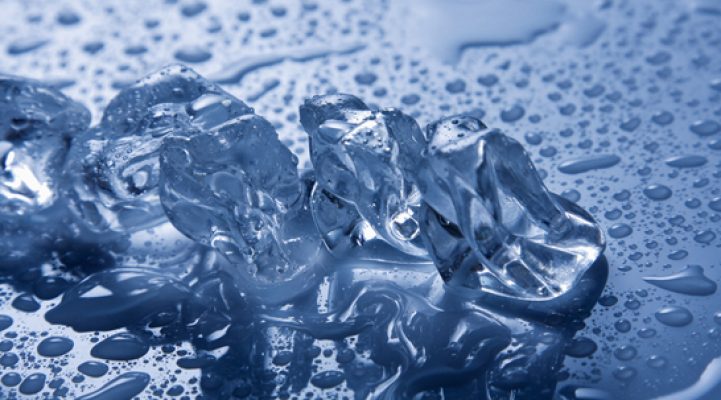Do you get water trickling down the rear interior wall of your refrigerator? Maybe even a layer of ice? Today we explain why condensation happens, to what extent it is completely normal and what you can do when it gets too much. As the summer season begins this phenomenon is very common to occur in cities where the humidity is high.
Water or a layer of ice on the rear interior wall of a fridge are not unusual. Water formation on a fridge’s back wall is an entirely normal physical process. Water will condense and collect at the coldest point. Cold air can hold less moisture than warm air. In refrigerators, water condenses on the rear interior wall because this is where the evaporator, which extracts the warmth from the interior, is located.
Which Appliances Are Affected?
Moisture and ice appear on the rear walls of refrigerators that feature a rear wall evaporator with no vertical partition plate. Condensation still takes place in appliances with vertical partition plates. However, the formation of moisture droplets is concealed by the partition.
Do Water And Ice Indicate A Problem With The Appliance?
Water accumulation on the rear wall is completely normal. There should only be a few drops or a thin film of water. If water accumulates in the condensation drainage channel, the drainage channel could be blocked. Carefully clean the channel to allow the condensate to drain freely. The user manual of your Liebherr appliance contains information on how to do this yourself.
How to Prevent Ice and Condensation on the Rear Interior Wall?
How much water or ice forms on the inner wall is determined by the following factors:
-
High Ambient Temperatures
If the ambient temperature is high, the compressor has to run for longer to maintain the required temperature in the fridge. This may occasionally result in ice formation.
-
Low Thermostat Setting
If the temperature thermostat is set too low, the air in the fridge can absorb less moisture, increasing moisture formation at the coldest point (the rear wall). In addition, for the refrigerator to provide more cooling power, the compressor has to run for longer. This reduces the time when the fridge is not actively refrigerating in relation to the compressor running time, leaving less time for the condensate on the rear wall to drain into the drainage channel.
-
Wet Food Items
Storing water-rich foods (e.g. fruit, vegetables, fish, meat, dairy products) or still-warm dishes in the main refrigerator compartment will release a lot of moisture into the interior atmosphere. This moisture will collect on the rear wall as condensate. Avoid putting warm food in the refrigerator. Wait until it has completely cooled down. If your refrigerator is equipped with BioFresh, use the Hydrosafe and Drysafe to store fruit, vegetables, meat and dairy products.
-
Frequent Opening of the Door
Frequent opening and closing of the door allows warmth and moisture to get into the refrigerator. The compressor has to work long and hard to return the interior temperature to its desired level. If the compressor has to run for a long time, ice may form on the inner wall of the fridge.
-
The Door Seal Is Not Airtight
If the water is draining correctly and yet the rear wall is still icy or puddles of water are forming, the door seal might not be airtight. Warm air outside the refrigerator can absorb more moisture than the cold air inside the refrigerator. A small hole in the door seal will continually allow warm air and moisture into the fridge, which will condense or form as ice on the inner wall.
Within Liebherr’s wide range of appliances there are models with which you will never experience wet or icy inner walls. Our BioFresh refrigerators feature a vertical partition plate in front of the actual inner wall. With BioFresh, food stays fresher longer and dries out far less.
To conclude:
Within Liebherr’s wide range of appliances there are models with which you will never experience wet or icy inner walls: namely, our BioFresh refrigerators, which feature a vertical partition plate in front of the actual inner wall. Not only this but, with BioFresh, foods stay fresh for much longer and dry out far less.
You can view our complete range on the Liebherr website or visit our showroom to see for yourself just how flexible the Liebherr refrigeration can be. If you have any questions, write to us in the Comment section below!
